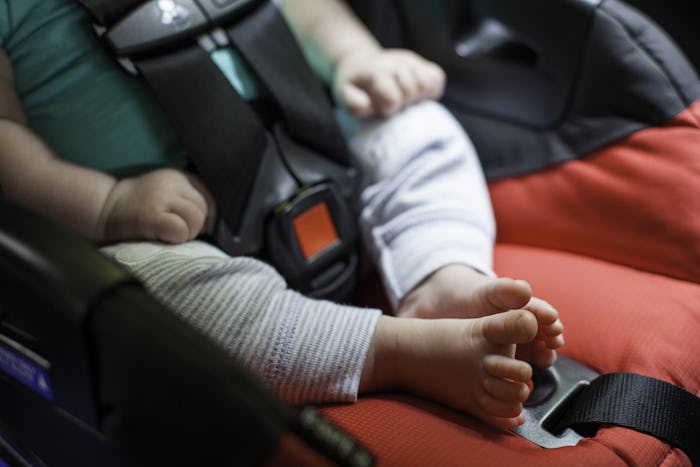Life
Following These Car Seat Harness Rules Is Key To Keeping Your Kid Protected
There is nothing more important than keeping your kid safe on the road. Car accidents are a leading cause of death — more than 1.3 million people die in road crashes a year in the United States, according to government data. Therefore it is imperative that your child is protected in all instances from the dangers of the road. Every element of their car seat is important to preventing accidents, like their car seat harness. So, these rules for car seat harnesses are especially important when it comes to your little one's protection.
The car seat harness sits against your child's chest and keeps them secure and in place in their car seat. Car seat harnesses are typically associated with both rear and front-facing car seats, according to the American Academy of Pediatrics. But they're incredibly prominent in front-facing car seats, where it keeps your child restrained and in place from their toddler to pre-school years.
Harnesses are all about position. If the harness is sitting weirdly against your child, rubbing up against them the wrong way, then the harness won't be doing its job. But these tips for car seat harnesses can help keep your kid protected and keep you aware of how harnesses should really function.
Position, Position, Position
When your child is sitting in a rear-facing car seat, according to Parents, the harness straps should be snug with the chest clip at the baby's arm pit level so it does not slide off. This also means that the harness needs to be threaded at or below the shoulders. With rear-facing car seats, according to Parents, the harness will protect the child from sliding up the back of the seat.
For bigger kids, according to Parents, the harness straps must be threaded through the slots that sit at or above the shoulders. That simple. But all children should be sitting with their back and bottom flat against the car seat when the car seat harness is being secured around them.
Make Sure It Fits Snugly
When a baby is sitting in a rear-facing harness it should be tight, according to Healthy Children. Parents should not be able to "pinch any slack between their fingers when testing the harness" and the harness clip must sit in the center of their chest, the site notes. The straps to the harness shouldn't be twisted and the harness should lay flat, too, according to The Spruce.
In case of the winter with your child bundled up, the harness should still be flat and secured against them. Children should be dressed in thin layers during the winter, according to the AAP, with the harness securely in place over their clothes. Once the harness is fitting snugly against them, parents can then bundle up their child in a blanket or coat on top of the harness.
A loose harness, according to Rear Facing Toddlers, will cause unnecessary movement in the event of a car crash and will allow your child to wiggle out of the correct positioning. In the worst case scenario, this can cause your child to be ejected from their car seat.
Watch For Growth
But if your child keeps on growing at a rapid pace (which it always seems like), then it is important that their car seat harness grows with them. You can tell a child has outgrown their car seat, according to the AAP, based on whether the tops of your child's ears have reached the top of the seat, they reach the maximum height or weight allowed for a car seat with a harness, and their shoulders are above the harness spots. This is when you can tell that your child has outgrown their harness and are ready to graduate to a bigger car seat or booster seat.
Fortunately, the rules for car seat harnesses aren't complicated: make sure it fits snugly and is in the correct position and your child will stay protected from harm's way.
Watch Romper's new video series, Romper's Doula Diaries:
Check out the entire Romper's Doula Diaries series and other videos on Facebook and the Bustle app across Apple TV, Roku, and Amazon Fire TV.
